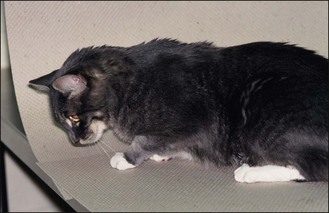

Narcolepsy in Labrador Retrievers is caused by a single nucleotide change (or SNP) in the Hypocretin Receptor 2 (HCRTR2) gene that causes exon-skipping and produces an abnormal protein.


Usually, signs appear between 4 weeks and 6 months of age and severity increases until animals are approximately 1 year old, when progression stops. It is characterized by daytime sleepiness, erratic sleep patterns, fast transition to rapid eye movement (REM) sleep, and sleep paralysis, but the most striking symptom is cataplexy – sudden loss of muscle tone and collapse without loss of consciousness – which can be triggered by strong positive emotional stimulus such as play or food. This disease affects the brain’s ability to control sleep-wake cycles. Narcolepsy is a disabling neurological disorder that has been identified in several dog breeds, including the Labrador Retriever. Results of this test can be submitted to the OFA (Orthopedic Foundation for Animals) Dogs with NA L/NA L genotype will develop this inherited narcolepsy and will transmit this narcolepsy variant to all of their offspring.Matings between two carriers are expected to produce 25% narcolepsy-affected puppies. They will transmit this narcolepsy variant to 50% of their offspring. Dogs with N/NA L genotype will not have this inherited narcolepsy, but are carriers.Dogs with N/N genotype will not have this inherited narcolepsy and will not transmit this narcolepsy variant to their offspring.Signs appear suddenly, recovery from them is spontaneous, and there is usually no progression in severity of signs after the dog’s first year.Īlleles: N = Normal/Unaffected, NA L = Labrador Retriever narcolepsy variantīreeds appropriate for testing: Labrador Retriever, Labradoodle Phenotype: Narcolepsy is a sleeping disorder commonly characterized by daytime sleepiness, fragmented sleep patterns, and sudden, transient episodes of muscle weakness or paralysis triggered by play or food.


 0 kommentar(er)
0 kommentar(er)
